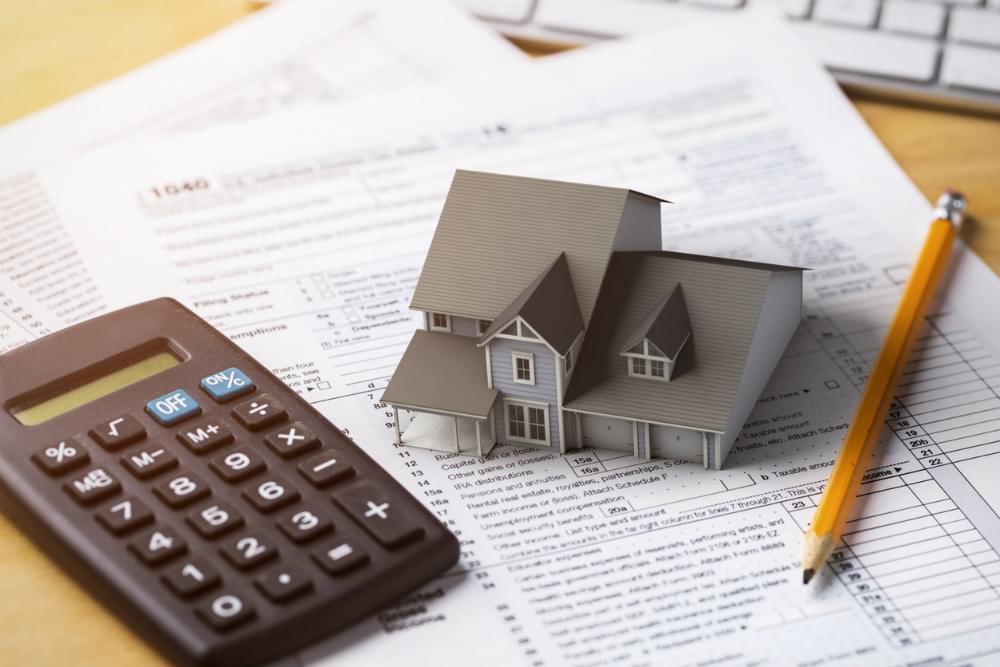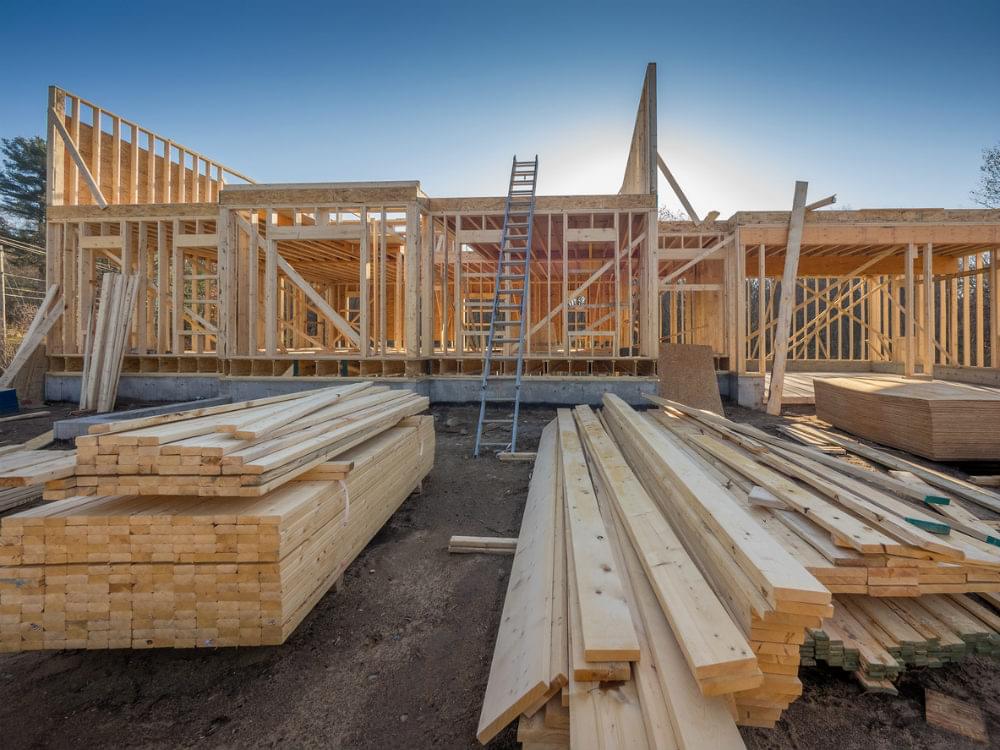Ultimate beginner's guide to property investment strategy
Learn more about our editorial guidelines.

Thinking of investing in property, but not sure where to start?
Property investment is a popular national pastime, with some 2 million Aussies calling themselves landlords and residential real estate accounting for more than half of all household wealth.
"Did you know: As an asset class, the Australian real estate market is worth over $6.5 trillion? That’s three times more than all of the superannuation funds across the country combined, and more than four times the value of all Australian listed stocks" (Source: CoreLogic, 2016)
It’s easy to see why. Unlike other investments - like shares or more complex ‘instruments’ such as derivatives - real estate is fairly simple to understand. It is also tangible - you can look at it, touch it and even live in it. As long as there is demand for property, you have a good chance of realising solid growth from your investment.
Contrast this with the stock market, which tends to be more volatile and complex. Against investment instruments such as this, investing in real estate outperforms many other asset classes.
That is not to say property investing is an easy ride - many novice investors have failed and had their dreams dashed. You need to thoroughly do your homework if you want any chance of being successful - so consider this guide as your first assignment.
Let’s get started! Property investment - the current state of play
Fun facts:
Out of 2 million investors, about 70% own 1 property, 20% own 2 properties and 10% own three or more (Source: Reserve Bank of Australia)
Approximately 48% of all investor owned dwellings are units. (Source: CoreLogic, 2016)
Investment concentrations are highest in Darwin, Gold Coast, Melbourne, Sydney & Brisbane (Source: CoreLogic, 2016)
Property investment: First steps

So, where do you start on your property investment journey? A good place to begin is by asking yourself some questions, such as:
- What kind of property - apartment, house or commercial - do I want to buy?
- How much do I have to spend?
- What suburb/s fit my investor profile?
- What income or cash flow can I expect?
- What are the risks involved?
These should all give you food for thought, and some indication as to whether property investing is right for you. If, for example, you don't have enough savings or equity to buy a house, you can immediately narrow down your search to units or apartments.
Remember, your budget will also restrict what locations or suburbs you can afford. Do some research into rental returns for the suburbs you're interested in, and you could find that your income may not cover your home loan.
"Identifying any risks before you invest is essential before you commit as the value of properties, like shares, can go up or down."
Read more: What you need to know about real estate investing
Finding the right investment property
Finding the right property for sale is a crucial part of successful real estate investing. Once you've determined a budget, you can narrow down your search to particular suburbs which meet your investment objectives. These are generally properties that will have the greatest potential for capital growth and rental return.
In terms of specific criteria to identify, and bearing in mind the demographic you're looking to attract, the suburb should have:
- Properties that are in high demand from tenants
- Good access to public transport
- A wide range of public amenities, including shops, schools and leisure facilities
- Access to employment opportunities or be within close proximity to these
Read more: Top things Millennials look for in a home

Watching the market
Monitoring the market is a key part of any successful property investment strategy. Your first step should be to identify what market data or performance metrics to track. Some key indicators to keep an eye on include:
Property values
The trend of property values, and if it is rising, flat or falling. Here, suburb sales data can help you identify which postcodes are posting high growth rates. If values are rising fast you could have identified a boom suburb.
Days on market (DOM)
If properties are selling quickly, then a short days on market (DOM) metric is a good sign that a market is hot. However, you’ll need to know the market, as this figure can vary depending on location.
Rental yields
Rising rental yields, which are calculated using rental income as a proportion of a property's value, are a good sign that there is strong demand for rental accomodation.
Auction clearance rates
Auction clearance rates are the percentage of the total number of properties sold over a week or month. Anything over 70 per cent is likely to indicate a hot market, though this will often depend on the local area.
Vacancy rates
Vacancy rates tell you how long a property remains vacant for, so be on the look out for falling or low rates in areas with high demand for rental properties.
You can also use a number of other factors to find an area that is on the up. Seasoned property investors look for suburbs or areas with:
- A rapidly growing population, which is going to drive demand for your property
- A vibrant and diverse local economy with a range of employment opportunities
- Investment going into local infrastructure, including new transport links, amenities and local services
- Median household income that is higher than inflation
- Low housing supply/high demand from buyers.
You should also take into account areas with the potential for growth in the next three to seven years.
In terms of data insights and sources, you are spoilt for choice, with authoritative property analytics sites like CoreLogic RP Data to help inform and narrow your search.
Realestate.com.au and Domain list properties for sale but they are also a great resource for other property data, as are associations like The Real Estate Institute of Victoria (REIV) or Real Estate Institute of Tasmania (REIT).
And not forgetting the property investment advice on OpenAgent, which covers everything from real estate investing to renovating, market news and much more.
Read more: How do you know if a suburb is booming? It comes down to these 5 indicators

Choosing an investment strategy
There are a number of ways you can invest in property and ultimately, you’re free to work out which strategy suits you best. Let’s take a look at some of the most common approaches:
Negative gearing (capital growth strategy)
"Did you know: Middle income bracket earners with a gross salary of around $60,000 to $80,000 are most likely to claim a net rental loss and use a negative gearing strategy?" (Source: CoreLogic, 2016)
Gearing is when you borrow money to pay for an investment property. If someone says they are negatively geared this is when a properties annual expenses exceed the rental income from it.
This has become a popular investment strategy, especially in the recent real estate investing boom - where investors are betting on house values appreciating. The theory is that you take a short term loss in the hope that property values keep rising, and you eventually sell for a profit.
Negative gearing can have tax advantages, as you are able to offset it and reduce your taxable income. The key to making this investment strategy successful is to invest in low risk areas that offer a very high chance of capital growth over the medium to long term period.
The catch, however, is that it offers you no option of receiving any immediate income or cash flow from the investment. This means you’ll need to be in a stable financial position to cover your losses during the short to medium term. The other downside is that a falling market could see you lose money on the investment.
“The key to making this investment strategy successful is to invest in low risk areas that offer a very high chance of capital growth over the medium to long term period.”
Positive cash flow strategy (rental strategy)
If the income from your investment property covers the interest of your loan and all other associated expenses, then this is positively geared - otherwise known as a positive cash flow strategy. The theory is that you can put this income toward paying down your loan and increase the equity.
The only catch is that it’s surprisingly difficult to find locations that offer a rental return that covers your home loan, as well as all the other expenses that come with owning an investment property. This includes maintenance, loan interest and a host of other ‘hidden’ costs that first time investors often overlook.
The key to finding positive cash flow properties is to look in suburbs or towns where prices are relatively affordable and have high rental demand.
The downside to this, however, is that positive cash flow properties are often, though not always, in locations with lower capital growth. For this reason, you’ll often have to settle for high income/low growth - an approach that would better suit someone close to retirement or is already retired.
Read more: A guide to understanding stamp duty
Renovations and house flipping strategy

If you are planning on renovating and flipping a property, you’ll need to be organised. Why? Because at the end of the day, if your sale price doesn’t exceed the cost of buying, holding and your reno outlay, your flip will have flopped - and you’ll be in the red.
To make house flipping profitable, you’ll need to be supremely organised.
Contrary to popular belief, house flipping is not easy money. There is no guarantee you'll make a fat profit, or any profit at all for that matter.
To make it work you need to be supremely organised, because time is money - remembering that every day you spend renovating you will be paying interest on your home loan. Many a novice flipper has flopped, normally because they got carried away and paid too much for a property, or blew their reno budget.
So, how do you flip for profit? Let’s take a look at what bases you need to cover.
The key to smart property investment and house flipping is to:
- Research the market thoroughly before you invest.
- Have a plan that includes a renovation timeline.
- Budget for absolutely everything - from how much your tradies and materials will cost, all the way to your real estate agents fees and interest on your investment loan.
- Buy at the right price in a suburb where demand for property is about to take off or is currently growing fast.
- Renovate with buyers in mind. Knowing what your target markets are looking for, in terms of features, is key to generating interest and competition for your property when it comes time to selling.
- Identify what cost effective projects can help you save money, particularly cosmetic jobs - like painting and new flooring - that deliver a big bang for a relatively low outlay.
- DIY wherever you can and get the experts in for complex jobs that need real skills.
- Schedule all the works in so your reno doesn’t get bogged down and delayed.
- Use an experienced local agent to help you sell the property as fast as possible - remember, time is money!
Read more: How much do pre-sale repairs and renovations cost?
Renovate and hold
The other way of investing in property is to buy, renovate and hold. This is a longer term play where you bank on capital growth working it’s magic. We tend to forget that property is essentially a long term investment, and it's only thanks to the recent housing boom that flipping has become so popular.
“We tend to forget that property is essentially a long term investment, and it's only thanks to the recent housing boom that flipping has become so popular”
The pros of a renovate and hold approach is that, with a well thought-out renovation, you can add real value to your property. You could even raise the rent post-reno, and use the increased equity to invest in another property and start a property investment portfolio.
Like any renovation, however, you’ll need to be careful as to not ruin any hope of a profit by overcapitalising. This means adding expensive, and often unwanted, features to a property - costs which basically scupper any chance of you realising a profit when you sell.
So if you are thinking of adding a pool, tennis court, wine cellar, air conditioning or any type of luxury feature to your property, think again - better still, don’t!
You also have to be careful not to be too focused on rental yields, at the expense of capital growth, because a high growth property will, in the long term, yield higher cash returns.
"Did you know: Australian homeowners are increasingly spending more on their renovations? In 2015, an average of $64,600 was spent on each home improvement and upgrade. In 2016, this average increased to $66,900." (Source: Houzz 2017).
Read more: What you should do before and during the buying of a renovator
Subdivision or construction

If you are fortunate enough to own a property with subdivision potential, it can be a fairly risk-free way of realising a profit. You may also be interested in buying a property with subdivision potential.
The first step is to check the local council regulation regarding this, as there are minimum land size requirements that apply. In addition, there are practical aspects to think about, like access to the new property and where boundary fences and driveways will run.
The site also needs to be level, otherwise you’ll be looking at excavation, which will drive up the cost.
If you are thinking of subdividing to develop, there are a range of costs to consider, including council/developer fees, town planners, consultants, utility installation fees and much more.
Not to mention, there are also construction costs, which will vary depending on the type of property you plan to build, and the materials and finishes you use.
“If you are thinking of subdividing to develop, there are a range of costs to consider, including council/developer fees, town planners, consultants, utility installation fees and much more.”
Read more: Guide to buying a house and land package
Co-investment partnerships
Co-investment partnerships, or joint venture partnerships, have become popular - and it’s not hard to see why. With property values increasing so fast, many people - particularly singletons and young couples - have been priced out of the market and lack the borrowing capacity for a home loan.
However, team up with one or more people - a friend or family member - and your combined income suddenly opens up the possibility of qualifying for an investment loan - allowing you to become a property investor. That’s not all, it could also enable you to qualify for a larger loan, and open up investment opportunities with bigger profits.
“However, team up with one or more people - a friend or family member - and your combined income suddenly opens up the possibility of qualifying for an investment loan - allowing you to become a property investor.”
The cons, though, are that you will have to work closely with your partner/s, and as we all know, partnerships do fall out. Your partners could end up being shonky or worse. One, or more partner/s could want to leave the partnership - which brings its own set of complications, as does the tax implications of this type of arrangement.
Our advice is to consult property investment professionals before you enter into a co-investment or joint venture style partnership.
If you find that it isn’t for you, try considering another alternative. Fractional investing, for example, is a new variation of this approach to property investment. The method allows you to buy a small portion or unit of a dwelling, typically via a dedicated platform who manages the property and sale.
Unlike a co-investment partnership or joint venture, you invest with strangers who join your syndicate.
In terms of costs, a commission to the platform is charged, along with other fees associated with joining a syndicate. The pro to fractional investing is that you can invest in property without having to spend hundreds of thousands of dollars.
"Did you know: The average Sydney mortgage is valued over $600,000? According to the HIA, it now takes more than two average full-time salaries to sufficiently manage the home loan of a standard Sydney home." (Source: ABC News, 2017).

Read more: What is rentvesting & what's so good about it?
Do’s & don’ts: Property management tips
Do you need a property manager? Many first-time property investors make the mistake of passing on a property manager, only to find they either can’t cope or don’t know what they are doing.
In terms of do’s, you should start by learning what your responsibilities as a landlord are.
First up you’ll need to get your head around your legal obligations as set out in the Residential Tenancy Act. You’ll also need to find and screen tenants, provide paperwork such as lease agreements and bond lodgement forms, set and collect rent payments, ensure your property is well maintained and ensure all repairs are carried out asap.
Let’s not forget, as the main point of contact for your tenants, you’ll need to be available and contactable 24/7 for anything that may crop up. This includes any situation that may involve a shonky boiler, broken windows or lost keys.
Get the picture? There is a lot to do; which is why professional property managers not only need to be excellent multitaskers, but they must also have a keen attention to detail and exceptional people skills.
In terms of don’ts, never assume that property managers are glorified rent collectors. As we have seen, there is a lot to know and do.
Property managers are not only familiar with the local market, which helps when it comes to setting a fair rent, but they also have access to a network of tradies and service personnel. This means they’ll know how to source a plumber on a Sunday morning when you need to fix that shonky boiler.
Secondly, don’t forget to ask what they charge before you sign up with them. The average commission property managers charge is 7.6%, however, you could be paying anywhere from 5% to 12%, depending on where you are.
And finally, don’t be shy to show your property manager the door if they aren’t providing good service. If they consistently find poor tenants, are expensive and take long periods of time to get back to you - show them the door.
Read more: What to look for in a property manager
Qualifying for an investor loan
As an investor, you’ll need to identify what investor loan will suit you. Investor loans tend to have stricter eligibility requirements than an owner occupier loan. They are viewed as a higher risk by lenders, and are likely to come with a higher interest rate.
To qualify, you’ll need to prove your gross income and identify what all your ongoing financial commitments are. Lenders change their lending criteria, depending on a range of economic factors - so you’ll need to check what applies in advance.
As recently as 2015, the Australian Prudential Regulation Authority (APRA) advised the banking sector to reduce the amount of investment lending. They subsequently raised interest rates for investor loans, which has cooled the market and limited the amount of loans.
"To qualify, you'll need to prove your gross income and identify what all your ongoing financial commitments are. Lenders change their lending criteria, depending on a range of economic factors - so you'll need to check what applies in advance."

Read more: The first of the 'big four' banks has increased its home loan interest rates
What else do you need to think about?
Never follow your heart when it comes to property investment. You actually need laser focus to yield a profit - be that over the short or long term. All your decisions should be based on sound analytical research and metrics - not emotion.
Avoid seeing yourself living in the property - rather, put yourself in the shoes of a tenant and ask yourself - would this property appeal to me? Armed with this mindset, you’ll have a much better chance of becoming a successful property investor.
And remember - property investing is not easy money. It’s actually quite hard to turn a profit. But with a lot of hard work, wisdom and due diligence, it is very well possible and rewarding.



